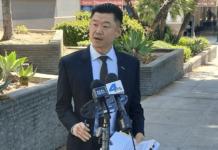
In the usual sunny city of Burbank, the latest storms have dropped close to 20 inches of rain so far and the right to collect and utilize rainwater has emerged as a topic of considerable discussion and legal scrutiny. We have heard and been now been told that the City of Burbank does not have have any rights to the rainfall, although individual citzens may collect it for their own use.
Background: The Legal Precedent
At the heart of the discussion is the California Supreme Court decision in L.A. No. 30119, rendered on May 12, 1975. This ruling has set a significant precedent regarding the collection and use of rainwater in urban areas across California, including Burbank. The court’s decision clarified the legal framework within which individuals and municipalities can collect and utilize rainwater, marking a pivotal moment in the state’s environmental and water conservation laws.
The LADWP Stormwater Master Plan
The city of Los Angeles has been granted the rights to collect rainwater across the San Fernando Valley, even in areas outside of their municipal jurisdiction. These rights are managed by the Los Angeles Department of Water and Power (LADWP) who has been at the forefront of developing comprehensive strategies to manage stormwater, a crucial aspect of which is outlined in its Stormwater Master Plan. This plan is designed to optimize the collection and reuse of rainwater within the Los Angeles basin, aiming to enhance water security, reduce dependency on imported water, and mitigate flood risks. For Burbank, the implications of this plan are profound, because Burbank Water & Power, our municipal utility, does not own the right to collect, store or distribute the rainwater. Instead, they must partner with LADWP who offers a blueprint for sustainable water management amidst increasing environmental challenges.
Implications for Burbank
Burbank finds itself at a crossroads in terms of water management. The city’s strategic approach to water supply and demand is influenced significantly by the legal and regulatory frameworks established by decisions such as the one in L.A. No. 30119 and the strategic directions provided by initiatives like the LADWP’s Stormwater Master Plan. Burbank Water and Power (BWP), the city’s utility, plays a critical role in navigating these waters.
Jeannine Edwards, Assistant General Manager of Burbank Water and Power, emphasizes the importance of collaboration in addressing the city’s water needs: “We have strong partnerships with the Metropolitan Water District (MWD), and work with all regional water agencies to discuss water supply and demand issues. We need partnerships because the infrastructure to bring in water is so expensive it would never make sense as a BWP-owned project; we will always need partners who could help fund and benefit from the investment.”
Collecting Rainwater: A Theoretical Exercise?
Edwards highlights the challenges and opportunities associated with rainwater collection in Burbank: “Collecting rainwater is a theoretical exercise given the currently established rights, and under that scenario, water management changes significantly. For now, we are focused on having a diverse water supply; we receive water from the Colorado River and The CA State Water Project.”
The strategy of diversifying water sources is crucial for Burbank, especially in times of abundance. “As often as we can when supply is rich, we purchase more water than we need to and store it in the Pacoima water-spreading grounds so it is available when the water supply from the Colorado River and the CA State Water Project is limited,” Edwards explains.
Furthermore, Burbank’s partnership with LADWP to clean up water in the San Fernando (SF) basin exemplifies innovative collaboration. In exchange for Burbank’s services in water purification, LADWP provides water credits that Burbank Water and Power can utilize in the future to pump water from the aquifers below the city. This arrangement not only addresses immediate water supply challenges but also lays the groundwork for sustainable water management practices.
The Road Ahead
The journey toward sustainable water management in Burbank is complex and multifaceted. The legal framework established by the California Supreme Court’s decision in 1975, combined with the strategic vision of the LADWP’s Stormwater Master Plan, provides a foundation upon which Burbank can build. However, the city’s ability to adapt and innovate, as highlighted by the initiatives and partnerships developed by Burbank Water and Power, will be critical in navigating the challenges of water scarcity and environmental sustainability.
As Burbank continues to explore the potential of rainwater collection and other innovative water management strategies, the lessons learned and the partnerships forged will serve as a model for other municipalities grappling with similar issues. The journey of Burbank, underpinned by legal precedents, strategic planning, and collaborative efforts, offers valuable insights into the future of urban water management in California and beyond.
Editor’s Note: This story was updated on March 1 at 2:00 pm to clarify some of the information






















